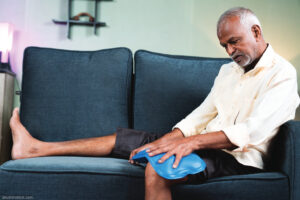 PHILADELPHIA—In the third Plenary Session of ACR Convergence 2022 on Monday, Nov. 14, researchers highlighted important findings on the efficacy and safety of sarilumab for polymyalgia rheumatica and the positive impact of community programs in promoting diet and exercise changes in patients with osteoarthritis.
PHILADELPHIA—In the third Plenary Session of ACR Convergence 2022 on Monday, Nov. 14, researchers highlighted important findings on the efficacy and safety of sarilumab for polymyalgia rheumatica and the positive impact of community programs in promoting diet and exercise changes in patients with osteoarthritis.
Sarilumab for Polymyalgia Rheumatica
Robert Spiera, MD, director of the Scleroderma, Vasculitis, and Myositis Center at the Hospital for Special Surgery, New York City, discussed the use of sarilumab as a potentially glucocorticoid-sparing therapy in a phase 3 study in patients with treatment-refractory polymyalgia rheumatica (PMR), one of the most common inflammatory diseases of the elderly.1,2
“Polymyalgia rheumatica is relatively easy to treat with glucocorticoids, but unfortunately relapses are common, resulting in prolonged courses of glucocorticoid therapy with its attendant morbidities,” Dr. Spiera said. “So we have recognized that a steroid-sparing therapy is an unmet need in PMR.”
Dr. Spiera explained that interleukin 6 (IL-6) seems to be a pivotal player in the pathophysiology of PMR. Blood levels of IL-6 are high in untreated patients and often rapidly fall after glucocorticoid treatment is started; concentrations of both plasma IL-6 and soluble IL-6 receptors correlate with disease activity. Moreover, persistent elevations in IL-6 are associated with relapsing, refractory disease, requiring extended treatment with glucocorticoids.3
Two recent placebo-controlled trials showed a potential benefit for IL-6 inhibition, including a randomized phase 2/3 trial of the IL-6 inhibitor tocilizumab, which showed that it was superior to placebo in terms of rates of remission, time to relapse and cumulative glucocorticoid dose.4,5
SAPHYR Trial Results
Dr. Spiera and his colleagues designed the SAPHYR trial, a randomized, double-blind, placebo-controlled phase 3 study, to assess the efficacy and safety of another IL-6 antagonist, sarilumab, in PMR patients aged 50 or older. Dr. Spiera pointed out that they studied patients who were refractory to steroid treatment, the PMR population with the greatest unmet treatment needs. To be eligible, patients had to have flared within three months of study entry while still on 7.5 mg or greater of prednisone.
Although initially designed for 280 patients, the number of participants recruited was lower due to the timing of the COVID-19 pandemic. The researchers randomized the patients into a treatment group of 200 mg of sarilumab subcutaneously every two weeks (n=59) and a comparator arm receiving placebo every two weeks (n=58). Participants in the treatment group had their steroids tapered rapidly over 14 weeks, compared to a more traditional 52-week taper in the comparator arm.


